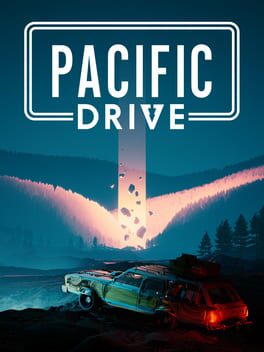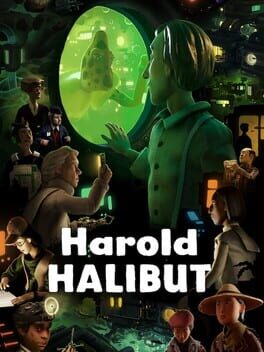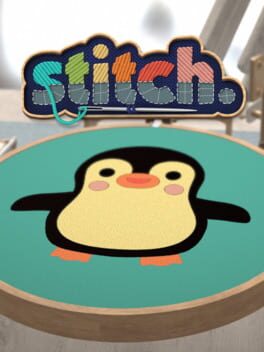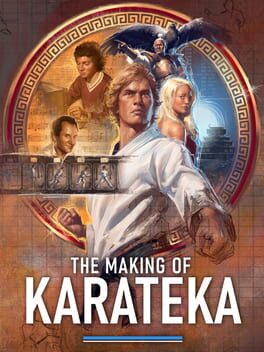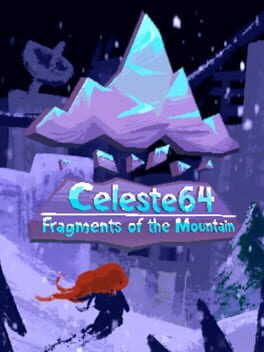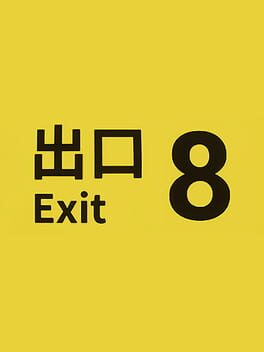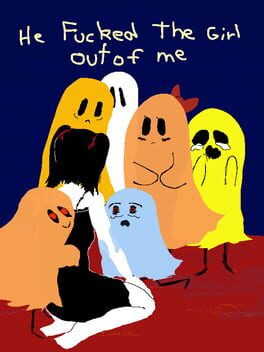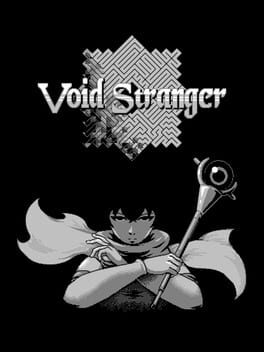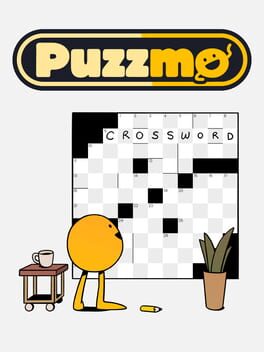humantree
BACKER
2024
I think this is the first survival-crafting game I've played, so there may have been a learning curve here for me that other players could have skipped. It took me a few runs to see the loop of looting and repairing your car fully set in, but once I fully understood it I think that was the point where I began to lose interest with the game. I never really felt much sense of satisfaction when I completed a run, and I was especially annoyed when I would screw up the ending of a run after the rest of it had gone smoothly. I get the sense that these mechanics are intrinsic to a game like this though, so I'm not sure if I was ever going to play this to completion.
That said, there are a lot of things I do like quite a bit about this. I actually really like methodically getting the car ready for the next run, even though it is literally just working through a checklist. Driving and interacting with/via the car itself also felt novel in a game of this type, and though the ends of runs where I failed were frustrating, the ones where I succeeding were almost always exhilarating (a tough line to walk). Expanding on that, the atmosphere surrounding everything in Pacific Drive is what hooked me initially, and kept me playing for the 10 or so hours that I did stick with it.
That said, there are a lot of things I do like quite a bit about this. I actually really like methodically getting the car ready for the next run, even though it is literally just working through a checklist. Driving and interacting with/via the car itself also felt novel in a game of this type, and though the ends of runs where I failed were frustrating, the ones where I succeeding were almost always exhilarating (a tough line to walk). Expanding on that, the atmosphere surrounding everything in Pacific Drive is what hooked me initially, and kept me playing for the 10 or so hours that I did stick with it.
2024
Let’s get the worst out of the way first. I can’t stand the character writing and performances in this game. I find a number of characters entirely off putting, some to the point where I would yell at my TV almost every time they spoke their condescension. It’s a small miracle I was able to push myself to play through the entire game.
While there’s a chance that some people may like the writing here, subjectivity and all, some problems relating to this are objectively bad. One example towards the end of the game has you being asked to copy a series of verbal instructions, and if you take more than a literal second to comply, the instruction will be impatiently repeated.
It’s not all bad though. The broad strokes of the story are interesting, and there is the occasional scene that is poignantly portrayed (most often without any dialogue).
The art is the main draw here anyway. Its claymation art style leads to some stunning scenes, but again I would put a caveat on this. Because you’re looking at recreations of physical objects, not the direct photos of the models themselves, something is lost in the physicality you’d normally get from this style. It kind of just looks like any other stylised video game.
Now I don’t think that’s a reason not to explore new creation methods for game assets, but when this game took 10+ years to develop, I’m just honestly not sure this was worth that time investment. I especially think this as you feel the game’s pace being padded out with a lot of slow backtracking.
I hate to sound so critical of something that’s clearly had so much care put into it, especially into the handmade art, but so much just didn’t connect with me. I’d recommend checking it out on Game Pass if you have it available so that you can see if you fare any better than I did with the writing.
While there’s a chance that some people may like the writing here, subjectivity and all, some problems relating to this are objectively bad. One example towards the end of the game has you being asked to copy a series of verbal instructions, and if you take more than a literal second to comply, the instruction will be impatiently repeated.
It’s not all bad though. The broad strokes of the story are interesting, and there is the occasional scene that is poignantly portrayed (most often without any dialogue).
The art is the main draw here anyway. Its claymation art style leads to some stunning scenes, but again I would put a caveat on this. Because you’re looking at recreations of physical objects, not the direct photos of the models themselves, something is lost in the physicality you’d normally get from this style. It kind of just looks like any other stylised video game.
Now I don’t think that’s a reason not to explore new creation methods for game assets, but when this game took 10+ years to develop, I’m just honestly not sure this was worth that time investment. I especially think this as you feel the game’s pace being padded out with a lot of slow backtracking.
I hate to sound so critical of something that’s clearly had so much care put into it, especially into the handmade art, but so much just didn’t connect with me. I’d recommend checking it out on Game Pass if you have it available so that you can see if you fare any better than I did with the writing.
2022
This takes elements from Picross and simplifies them in most cases. Other than on the shikaku puzzles you can usually breeze through the puzzles without a whole lot of thought, but honestly I’m kind of fine with that. This is just a good chill out, play while listening to a podcast, or while you have a free five minutes sort of game. It’s also perfect to play on a phone with one hand, so it’s ticking all the boxes I’m looking for in a phone game these days.
The shikaku puzzles go in the other direction, unfortunately, where they do require some real thought, but as far as I’ve been able to discern, there’s no real strategies to solving them (like you’d have in Picross), making it a long series of trial and error actions. I lost interest in these pretty quickly, especially as they don’t have any art once they’re complete either. I think the design of the regular puzzles’ art is delightful, so that’s another point for them.
The shikaku puzzles go in the other direction, unfortunately, where they do require some real thought, but as far as I’ve been able to discern, there’s no real strategies to solving them (like you’d have in Picross), making it a long series of trial and error actions. I lost interest in these pretty quickly, especially as they don’t have any art once they’re complete either. I think the design of the regular puzzles’ art is delightful, so that’s another point for them.
A really fun Metroidvania, with really responsive movement and a good combat system. There's some nice art too, especially in things like the UI and combat effects. The environments also look good, though they're maybe not the most unique or memorable.
The story was easily the weakest point for me, with the main story seeming interesting at first before just becoming set dressing. The collectables that had lore attached to them, which I was compelled to read all of because of the type of game player that I am, had writing that I found rather impenetrable. I would often read a paragraph and immediately be unable to recall what it was about. I wish this had better, and usually sparser, writing, as the setting here was intriguing.
The story was easily the weakest point for me, with the main story seeming interesting at first before just becoming set dressing. The collectables that had lore attached to them, which I was compelled to read all of because of the type of game player that I am, had writing that I found rather impenetrable. I would often read a paragraph and immediately be unable to recall what it was about. I wish this had better, and usually sparser, writing, as the setting here was intriguing.
2020
When I first met Judy, I (quite superficially) was hoping she was going to be a love interest option in the game. Alas, as I was playing as a male V, Panam was the option I was steered towards, and at first I didn't really care for her. To my surprise, as this romance side story progressed interspersed across dozens of hours, I watched that relationship grow and blossom, and also grew to like that character myself. By the time her head was resting on V's lap in his apartment, looking up into his eyes, I was sold on her as his partner.
To switch into first person for a second, looking into characters eyes is something that happens multiple times in this game, and it always feels impactful. The moments that have stuck with me have been quiet ones, and managed to feel incredibly personal, really pulling you into the moment.
That's what I enjoyed most about the game, how it could draw you in. I spent an unreasonable amount of my time in Night City walking, not running, down its streets; waiting for the lights to change at pedestrian crossings; not skipping time ahead when another character was driving me somewhere (1), and instead just taking in the sights. I felt either like a tourist or a citizen of this incredibly detailed city, depending on the day, and I wanted to soak that in.
The hacking and shooting in Cyberpunk 2077 feels better than I expected (worth nothing I've only played after the 2.0 update), though in a game with countless options and combinations, at a relatively early point I just picked some guns and quickhacks that worked well for me, and rarely switched from them, as the game doesn't incentivise you to. While I wouldn't say it stopped being fun, I also wouldn't say it stayed fresh the whole time. Fortunately the world-building and story kept me coming back through the whole game.
1. Okay, I did have to skip one instance of an NPC driving me around. At one point an NPC completely forgot how to drive, and started driving in circles, hitting cars and poles and anything else he could find in this small radius. I watched this for about 10 minutes before I gave up. Wouldn't be Cyberpunk 2077 without some glitches still, right? Let's just say I was at least a little terrified any time that NPC offered to drive anytime from then on.
To switch into first person for a second, looking into characters eyes is something that happens multiple times in this game, and it always feels impactful. The moments that have stuck with me have been quiet ones, and managed to feel incredibly personal, really pulling you into the moment.
That's what I enjoyed most about the game, how it could draw you in. I spent an unreasonable amount of my time in Night City walking, not running, down its streets; waiting for the lights to change at pedestrian crossings; not skipping time ahead when another character was driving me somewhere (1), and instead just taking in the sights. I felt either like a tourist or a citizen of this incredibly detailed city, depending on the day, and I wanted to soak that in.
The hacking and shooting in Cyberpunk 2077 feels better than I expected (worth nothing I've only played after the 2.0 update), though in a game with countless options and combinations, at a relatively early point I just picked some guns and quickhacks that worked well for me, and rarely switched from them, as the game doesn't incentivise you to. While I wouldn't say it stopped being fun, I also wouldn't say it stayed fresh the whole time. Fortunately the world-building and story kept me coming back through the whole game.
1. Okay, I did have to skip one instance of an NPC driving me around. At one point an NPC completely forgot how to drive, and started driving in circles, hitting cars and poles and anything else he could find in this small radius. I watched this for about 10 minutes before I gave up. Wouldn't be Cyberpunk 2077 without some glitches still, right? Let's just say I was at least a little terrified any time that NPC offered to drive anytime from then on.
2024
As in Lucas Pope's earlier games, this is taking a core mechanic and running with it. Using the Playdate's crank to open and close a door's security flap is incredibly basic, but feels just right, and in this game with very light storytelling, this simple tactile interaction goes a long way towards making this world come alive.
Also in line with his earlier games, I feel like Lucas Pope's one-man show of doing design, code, art, and music, adds a cohesion that lets details come through even in a small scale project like this one. Even though the minigame-esque mechanics are all quite easy, they give room for all the art to be appreciated. Also, some of the mechanics end up being quite funny!
Before this I hadn't really used my Playdate much (lack of a backlit screen was harder to deal with than I was expecting) but this is the game I'd been waiting for on the system. If you have a Playdate already, buying this game should be a given. Maybe it'll even get me to keep using my Playdate some more now!
Also in line with his earlier games, I feel like Lucas Pope's one-man show of doing design, code, art, and music, adds a cohesion that lets details come through even in a small scale project like this one. Even though the minigame-esque mechanics are all quite easy, they give room for all the art to be appreciated. Also, some of the mechanics end up being quite funny!
Before this I hadn't really used my Playdate much (lack of a backlit screen was harder to deal with than I was expecting) but this is the game I'd been waiting for on the system. If you have a Playdate already, buying this game should be a given. Maybe it'll even get me to keep using my Playdate some more now!
Utilizing the interactivity of this medium to tell the history of a game and creator is the perfect use of this technology. Being able to work your way through this timeline and jump into an unfinished prototype, or a specific retro version of a game being discussed, adds invaluable context to the documentary that a simple video version could never provide. Jordan Mechner's unbelievable level of self-diarizing made him the perfect candidate for the first of this Gold Master series, in a way that I'm now actually worried about how others will be able to follow this up with similar historical assets.
Karateka was a game I knew basically nothing about, so learning about its impact on gaming through this was incredibly fascinating. Though I don't think the filmed documentary sections in this were of the highest quality, the whole package still got across the importance of this game's use of rotoscoping, music, and dramatic styling at this point in gaming history. While I'd never played Karateka before this, I had played Prince of Persia, and it was easy to see the lineage there in hindsight. Though Karateka seems somewhat slight by today's standards, it was still fun to play through the various versions of it, especially with the historical context in place.
This style of gaming documentary is such an easy recommendation from me, and I can't wait to play more in this series.
Karateka was a game I knew basically nothing about, so learning about its impact on gaming through this was incredibly fascinating. Though I don't think the filmed documentary sections in this were of the highest quality, the whole package still got across the importance of this game's use of rotoscoping, music, and dramatic styling at this point in gaming history. While I'd never played Karateka before this, I had played Prince of Persia, and it was easy to see the lineage there in hindsight. Though Karateka seems somewhat slight by today's standards, it was still fun to play through the various versions of it, especially with the historical context in place.
This style of gaming documentary is such an easy recommendation from me, and I can't wait to play more in this series.
If you can imagine Celeste as a throwback 3D platformer, you know exactly what you’re in for here. Really impressive that the team game-jammed this out in a week or so, especially with this being their first foray into 3D, and still having it be recognisable as Celeste at every turn.
Certainly room to improve on basically every aspect here, but especially the controls, camera, and environment progression. But again, to get this out in such a quick timeframe, this is more than adequate. Keen to see what the studio ends up doing with these learnings.
Certainly room to improve on basically every aspect here, but especially the controls, camera, and environment progression. But again, to get this out in such a quick timeframe, this is more than adequate. Keen to see what the studio ends up doing with these learnings.
2023
A cool setup, but I found myself overanalysing the scenes to an unnecessary degree, killing any atmosphere that may have been created. It also made the loop feel repetitive very quickly. Not really sure how to solve for that issue in my particular case, as the details I was inspecting did add to the environment, and I’m not sure how you could point away from them without being too obvious.
2023
There’s so much that I love here. The puzzle designs, the soundtrack, the writing, the art style. But more so than with other Metroidbrainia games, I’m a little torn with how the secrets are asking to be discovered in Void Stranger.
There would be times that I would have an idea about something to check on or try, but the time investment to do so would often be significant. It sometimes felt set up at odds with encouraging experimentation, and led to me reach to look things up online so I didn’t burn on out on the game too quickly.
However I can concede to any arguments that streamlining things could definitely make secrets too easy to stumble upon, or not encourage players to pay attention enough during their regular gameplay. This is a nascent genre and seems like an incredibly difficult balancing act to pull off.
With that caveat, I’m really glad I stuck with this game. It has a lot to offer if you give it some time and effort.
There would be times that I would have an idea about something to check on or try, but the time investment to do so would often be significant. It sometimes felt set up at odds with encouraging experimentation, and led to me reach to look things up online so I didn’t burn on out on the game too quickly.
However I can concede to any arguments that streamlining things could definitely make secrets too easy to stumble upon, or not encourage players to pay attention enough during their regular gameplay. This is a nascent genre and seems like an incredibly difficult balancing act to pull off.
With that caveat, I’m really glad I stuck with this game. It has a lot to offer if you give it some time and effort.
2023
I’ve tried out all the games on offer in Puzzmo, but Crossword is the only one I’ve clicked with. Fortunately I’ve really clicked with it, currently keeping a 53 day streak going!
Just as Zach Gage did with Good Sudoku, Crossword adds enough clever little tweaks and helpers onto an existing game that I was finally able to learn to enjoy the underlying game in a way I’d always wanted to. Adding lines to show where spaces will break up multi-word answers is a great addition, but the hint system is the real key here.
Every crossword clue also provides you with an optional hint. It took me a few games before I started taking advantage of these, instead trying to clear each puzzle with a perfect “no hint” result. However the interplay between hint usage and time penalty adds a great opportunity for strategy. Each hint adds 30 seconds onto your timer, so if you’re taking more than 30 seconds to work out a clue, you likely would have been better off in the long run taking the time hit earlier with the hint.
With that in mind, more strategy comes with the location of the word that you want a hint for, where a hint spent on a long word that intersects multiple others will probably end up being more valuable than a short word off in a corner. This combined means that when I play now, I’m rushing my way through the crosswords, strategically looking for the next clue that I think I have the best change of solving, and if none are left, looking for the next best place to spend a hint while it’s still worth my time to do so. Not really how I expected to approach a crossword game, but a lot of fun!
One other note on Crossword is that they did show difficulties early on, but these have since gone away. Though it was nice to have an idea of what you might be in for, my wife and I often found they didn’t match up with our experiences, so I think removing them is the right call. With the hints being on a range of international topics, and the puzzles changing daily and presumably not having a huge amount of testing data, I can absolutely see how subjective a difficult rating would end up being.
Just as Zach Gage did with Good Sudoku, Crossword adds enough clever little tweaks and helpers onto an existing game that I was finally able to learn to enjoy the underlying game in a way I’d always wanted to. Adding lines to show where spaces will break up multi-word answers is a great addition, but the hint system is the real key here.
Every crossword clue also provides you with an optional hint. It took me a few games before I started taking advantage of these, instead trying to clear each puzzle with a perfect “no hint” result. However the interplay between hint usage and time penalty adds a great opportunity for strategy. Each hint adds 30 seconds onto your timer, so if you’re taking more than 30 seconds to work out a clue, you likely would have been better off in the long run taking the time hit earlier with the hint.
With that in mind, more strategy comes with the location of the word that you want a hint for, where a hint spent on a long word that intersects multiple others will probably end up being more valuable than a short word off in a corner. This combined means that when I play now, I’m rushing my way through the crosswords, strategically looking for the next clue that I think I have the best change of solving, and if none are left, looking for the next best place to spend a hint while it’s still worth my time to do so. Not really how I expected to approach a crossword game, but a lot of fun!
One other note on Crossword is that they did show difficulties early on, but these have since gone away. Though it was nice to have an idea of what you might be in for, my wife and I often found they didn’t match up with our experiences, so I think removing them is the right call. With the hints being on a range of international topics, and the puzzles changing daily and presumably not having a huge amount of testing data, I can absolutely see how subjective a difficult rating would end up being.
